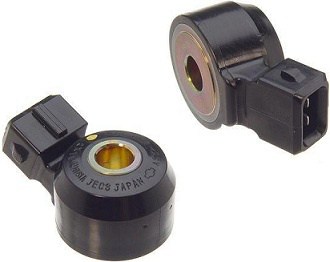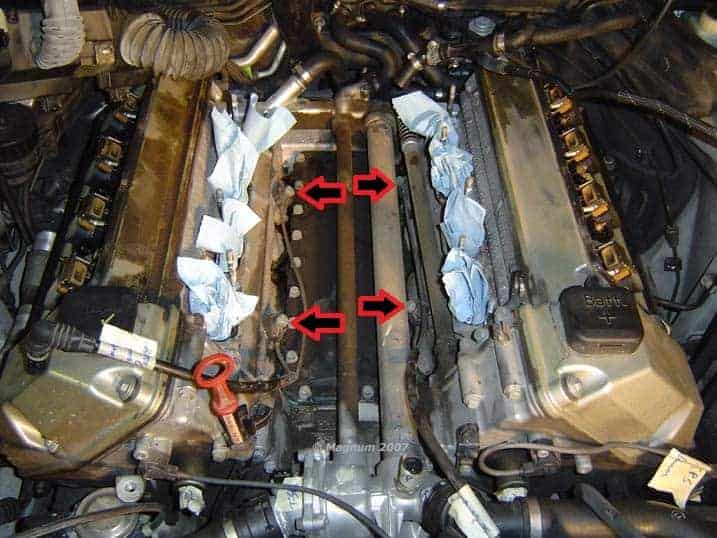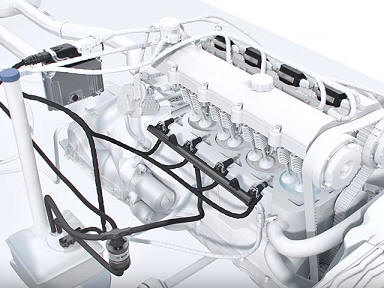Subjects:
- Detonation
- knock sensor
- Water Injection
ping:
Knocking only occurs on mixture engines (gasoline/gas). Engine ping (also called engine detonation or knocking) is the spontaneous combustion in a gasoline or gas engine. When the engine pings, the fuel is not ignited by the spark plug, but ignites on its own at an earlier time. In that case, the mixture ignites while the piston is still compressing. The piston rises and the explosion is already taking place. The piston force is now greatly counteracted, which can cause significant engine damage (such as a hole in the piston). Knocking only occurs in the low rev range.
Possible causes of pinging:
- De engine cooling is not in order: Because the engine gets so terribly hot, the temperature in the combustion chamber also rises more than normal. During the compression of the mixture, heat is also generated, which can cause it to ignite prematurely.
- Wrong kind gasoline: When it is specified by a car manufacturer that petrol with the octane number RON 98 must be refueled, never refuel with RON 95. RON 98 has a lower readiness to ignite than RON 95. This means that 98 ignites less quickly than 95.
If 95 is nevertheless refueled, there is a good chance that the engine will ping, because the temperatures in the combustion chambers rise higher than in other engines. The fuel then ignites earlier than it should. It may ignite when the piston is still compressing and the spark plug hasn't even sparked yet.
Therefore, 98 is suitable for higher temperatures and pressures in the combustion chamber. - Wrong driving behaviour: When driving up a steep slope with an engine speed that is too low, for example with a caravan or other heavy load, there is a high risk of pinging. The cooling is then minimal and the combustion pressures and temperatures are maximum. It is better to shift down a gear (from 5 to 4) so that the engine will run at a higher speed. There is often also less gas to be given and the engine probably consumes even less fuel.
- Pollution: Incorrect driving behavior can also cause a lot of pollution in the engine. By always driving short distances and/or always driving at low speeds (switching too quickly, so that the engine can never get going properly), a lot of engine pollution is created. Due to the low revs, all carbon residues stick to the valves and to the piston bottom. When the engine is once more heavily loaded, those carbon residues glow (just like at the barbecue) and they take over the job of the spark plug. The fuel then ignites through the embers before the spark plug sparks, increasing the risk of knocking.
Do you want turbo can break down in this way, as the glowing embers can attack the material.
Cases like this are common with “the new driving” where people are told to upshift as early as possible. Driving in the city at a low speed certainly saves fuel, but just like example 1, when driving in the mountains with a caravan it can have fatal consequences for the engine and downshifting is more economical. Always quiet driving always gives problems with pollution. Certainly with the newer generation of engines with EGR and variable valve timing, etc. It is therefore good to occasionally make the same number of revolutions with a warm engine (eg up to three quarters of the maximum engine speed).
Knock sensor:
Knock sensors are increasingly being used in new engines. These sensors are mounted on the engine block. Often several are mounted, one sensor between each two cylinders. During knocking, a certain vibration frequency is created in the motor, which is recognized by the knock sensor. In that case, the engine control unit controls the exit from the ignition timing in 3 degree increments. The knock sensor actually ensures that the engine just does not ping and is just at the limit. The engine control unit will constantly advance the ignition timing of all cylinders in 0,5 degree increments to their normal value.

The image below shows a V8 engine with 4 knock sensors mounted. The tips of the arrows indicate the knock sensors. It's a bit difficult to see. The sensors are attached to the engine block with 1 bolt. You can see the wiring of these sensors running forward.

Water Injection:
To prevent pinging, you can also opt for water injection. The injected water vapor absorbs the heat in the combustion chamber. The temperature, and therefore also the chance of pinging, decrease. This applies in particular to turbocharged engines that deliver a lot of power and therefore good must Worden refrigerated.

